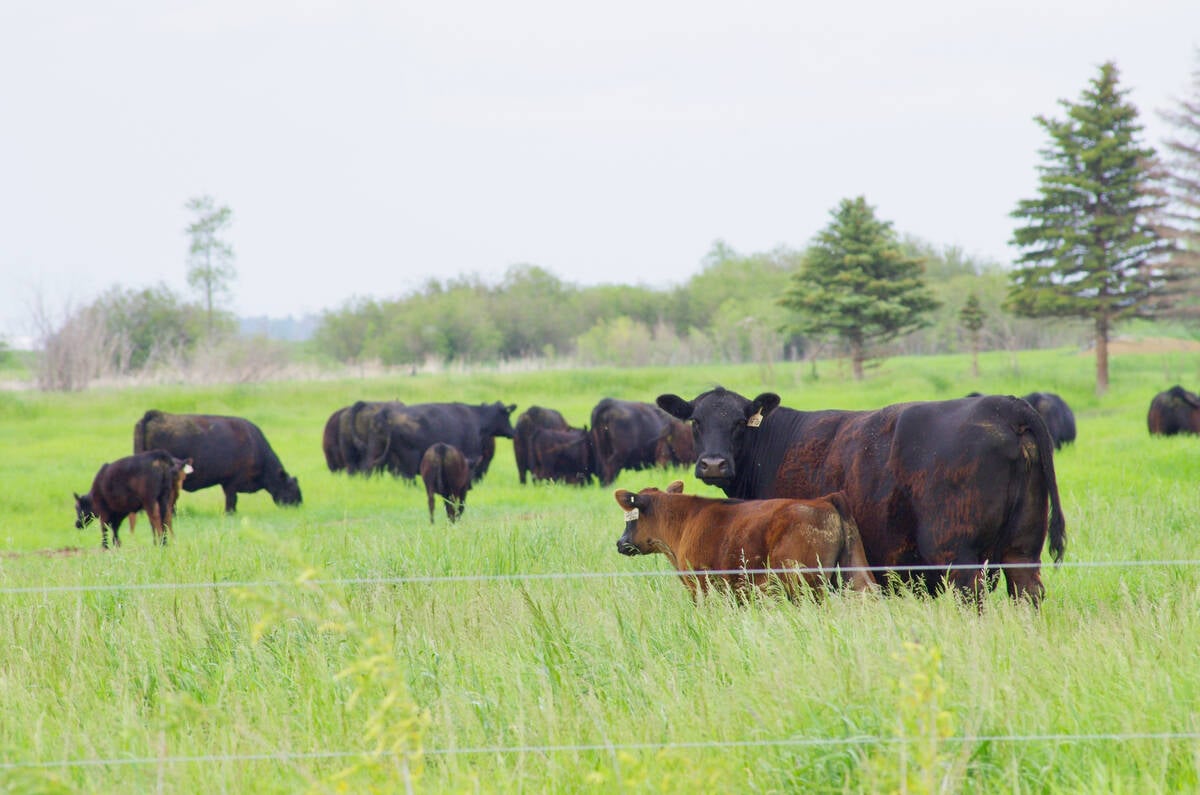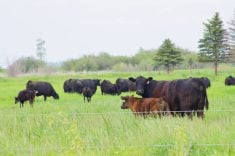LETHBRIDGE – Alfalfa is known for its ability to add low cost pounds of beef to cattle but the trade-off is the risk of bloat.
“The fear of bloat costs the livestock industry more than bloat itself,” said grazing consultant Jim Gerrish at a recent legume grazing seminar in Lethbridge.
Producers avoid legumes in the pasture mix even though these plants add nitrogen to the soil and produce good weight gains on animals, he said.
Studying the nutritional value of feeding straight alfalfa is difficult because of the high risk of death, said University of Calgary veterinary Merle Olson.
Read Also

Tick research from the University of Manitoba focuses on insects and testing
Manitoba researchers are looking into the effects of tick and fly disease in cattle.
He has researched products to prevent bloat, but registering them with Health Canada is a slow process.
Alfasure is one promising product but it could be two years before
approval.
Research trials across the Prairies added it to drinking water through an automatic medicator.
The cattle grazed alfalfa at rates between 40 and 100 percent in the pasture. If they drank enough medicated water, they did not bloat. Any bloat problems occurred when the cattle did not receive the medication. Cattle weighing less than 1,000 pounds required six millilitres per day while heavier animals needed 10 mL.
Sheep will not drink enough water to get sufficient treatment because they tend to get most of their water from plants. An alternative treatment is spraying bloat protection on the plants before grazing.
When an animal did bloat, the researchers injected Alfasure with a large needle straight into the rumen and in 10 to 15 minutes it decompressed.
There are other products on the market but getting them into the animals can be tricky.
“You want 100 percent efficacy and you are not going to get it,” Olson said.
The active ingredient in Alfasure is also found in products like Bloat Guard. At issue is the formulation of the product, which is not available in Canada or the United States.
The only way to speed the process is to request an emergency registration with Health Canada.
The high price of grain and a good supply of legumes as a substitute feed could be presented as a crisis to encourage approval sooner, said Olson.
Bloat in cattle has several causes, but the most common is eating vegetative forages like alfalfa, winter wheat, rye or triticale or processed concentrate feeds like rolled barley.
The rumen fills with a mass of fermenting food particles, gas, foam and bacterial slime. Rumen bacteria normally break down the feed and ferment it. This causes gas bubbles to form and normally the animal burps them out. Sometimes it cannot burp and a frothy bloat occurs.
The rumen gets bigger, the animals cannot get rid of the air and they suffocate. Oral drenching or chasing them does not relieve the problem.
“The worst thing you can do when they have bloat is to chase them around the pasture. They are suffocating,” said Olson.
Bloat can be controlled with management. Risk factors include consuming plants at the prebud or vegetative stage when they are eight to 10 inches high. As the plants mature, the risk
declines.
Another risk is turning hungry animals onto young plants wet from morning dew or after a morning frost.

















